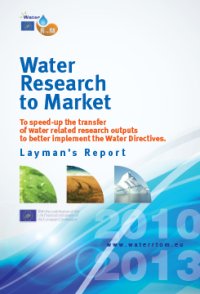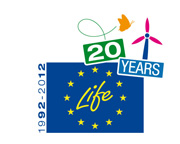Actions
Actions and means involved:
Firstly the partnership will perform a permanent watching of the sector :
- on the research side, identification of current projects at EU level (both FP and Member-states), continuous survey and listing of outputs, upstream discussions with research performers on their outputs, first ranking of the outputs in term of distance-to-the-market, …
- on the practices side, permanent survey of bottom-up rising questions and demand for tools by practitioners, including links with forum run by others.
Then a standardised method for an in-depth assessment of the potential benefits of emerging tools / methodswill be developed (the Research to Market Assessment Strategy - ReMAS) to assess research outputs in term of their distance-to-market, i.e. whether they can be re-used by somebody else than the research team, at a reasonable cost, and reasonable risk (the closest to the market will be known then as Innovation Precursors). This evaluation includes an assessment of IPR and patents, as well as related existing standards.
Our vision of the “research to market scale” is as follows :
For those research outputs ranked “close-to-implementation”, an individualized strategy for implementation (a business case) will be developed in close negotiation with the selected research teams for preparing the steps further.
We plan to process different types of research outputs, like those not that far from the market, for which one additional step is needed , which could be a 1-year project for x1 or a 3-year one for x3 (examples) ; and outputs for which a more complex approach would be needed with several steps, like x2, lasting more than 3 years (e.g. an Interreg or a CIP project, then a SME innovation project).
A business case is more to be seen as a process and a roadmap, which describe the steps to be performed. At the end of the project, all business cases will not be “wrapped up”, i.e. with a market-ready product ; some of them will, others will be “on progress” (i.e. with a project on-going, or a proposal submitted for funding), others will be still on the to-do list).
The promotion of Innovation Precursorswill be organized during brokerage events, to identify both sites for implementation, and SMEs / companies ready to take over the innovation : this will be done thanks to a Precursors Marketing Strategy (PMS), made of human-based interactions :
- brokerage events : typically a 1 or 2-day workshop, back-to-back with a larger regular event (Pollutec in France (36,000 visitors in 2007), IFAT in Germany (120,000 visitors in 2008), WODKAN in Poland (8,000 visitors in 2009), annual World Water Week in Sweden (2,500 visitors in 2009), EXPOAPA in Romania, etc) or conferences organised by the partners and associated partners (like the Euro-INBO annual meeting ~ 150 attendants),
- Seminars : typically one-day events organised at local (national or regional) level, focused sharply on one topic
- Papers and briefs will be published in specialised local journals
- eSeminars : typically a series of 2-hour web-based conferences, focused sharply on one topic, repeated along the year
- eFair : a permanent virtual area for brokerage of precursors on a free access basis (although with the necessity to contact the team to go further)
The eTools will take advantage of the Web2.0 features to involve the targeted stakeholders in social networking, through an active community of practices.
To help the practitioners and the researchers to prepare innovation projects, whennot re-inventing the wheel, WaterRtoM will benefit from the existing Enterprise Europe Network (EEN), a network of 70 local consortiums, gathering about 600 partner organisations in more than 40 countries, promoting competitiveness and innovation at the local level in Europe and beyond ; the entry point in EEN will be their branch in South-West France, with which a pre-agreement is signed.
The partners of the consortium are all capacity builders in the water sector, in France, Spain Poland and Romania, with strong connections with the main water stakeholders, and both solid scientific and technological backgrounds.
Running the project in 4 countries will help to design a strong and robust methodology adaptable to different contexts ; the partners intent to demonstrate it first in their own environment, before to test it in other countries in a second step, thanks to the European contacts they all have, and particularly in Germany and Sweden.
To develop close relationships with both the research side and the practitioners side, a Liaison Committee (advisory body) will be settled, with high-level members like (agreements given) the Water ERA-Net, the Water Supply and Sanitation Technology Platform, INBO the network of districts managers, the Languedoc-Roussillon “Cluster EAU” (Pôle de compétitivité) and its network of ecotech SMEs, Aqua Publica Europa the network of public water utilities, etc.




